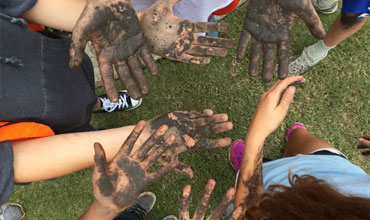- Middle School Campus
- (919) 715-3690
- Elementary School
- (919) 715-0333
- Phone:
- (919) 715-3690
- Fax:
- (919) 715-2042
- Instructional Hours:
- M-F 8:15am - 3:15pm
- Phone:
- (919) 715-0333
- Fax:
- (919) 715-0916
- Instructional Hours:
- M-F 8:30am - 3:15pm

Exploris offers a rigorous experiential education that empowers learners to improve the world.
The Exploris School is a diverse learning community that engages students in a challenging, relevant, relationship-based education. Through experiential, project-based learning we empower students to foster a just and sustainable world. Exploris has been serving students in the downtown Raleigh community for over 20 years and is committed to growing our school in size and diversity to expand support and opportunity for all students. Our educational program is built around four core pillars: Global Education, Project-Based Learning, Co-Teaching, and Responsive Classroom. Curriculum is designed around essential questions and aligned with the North Carolina Standard Course of Study. Students learn through hands-on activities, service learning, field experiences, and competency-based grading that allows all students the opportunity to grow and master skills.


Our standards-based curriculum is designed for collaborative, hands-on, experiential and cross-curricular learning. Students work together to explore the local and global communities, and design solutions that make a positive impact.
learn moreThe heart of Exploris is the crew, a small group of students and a teacher who meet daily to explore our core values of Innovation, Relationships, Social Empowerment, Curiosity, Craftsmanship, Responsibility, Connections to Nature, and Reflection.
learn moreFamilies are essential at The Exploris School. Whether participating in field experiences, leading an enrichment class, or attending family learning events, we value the contributions of all types of families.
learn more